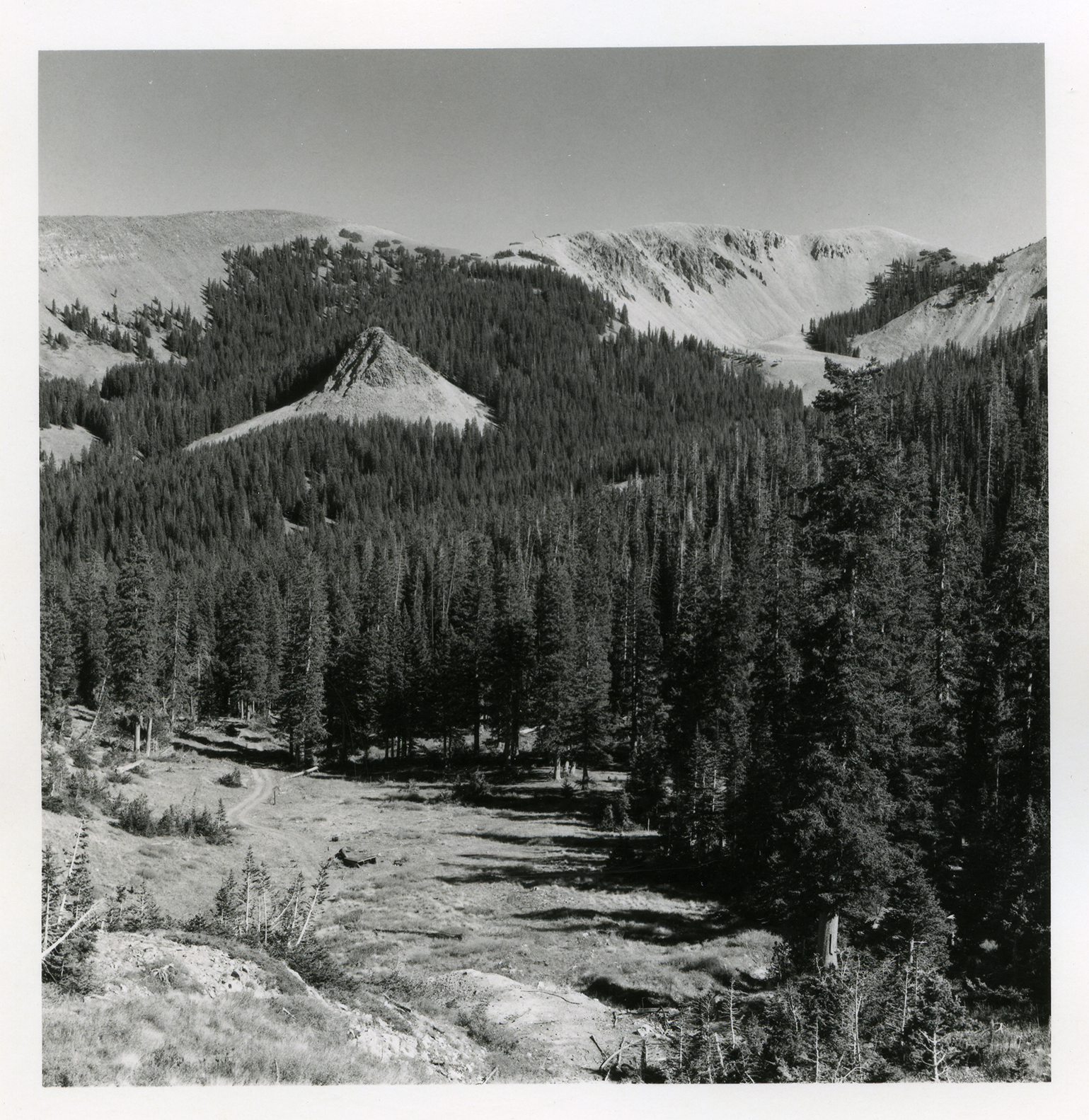Some information may be outdated.
Gold was discovered by prospectors in the La Sal Mountains in 1888. It was a discovery that launched the establishment of the now-depopulated town of Miners Basin deep within the La Sal Mountains.
The town is located in a ravine on the northern end of the La Sal Mountains, above Pinhook Draw and the upper reaches of Castle Valley. In 2004, Sena Hauer wrote in a Canyon Legacy article titled “Miners Basin, a Ghost Town of Grand County,” that “[Miners Basin] is tucked away from the world, slowly returning to its original state before man was lured there to search for riches.”
The article continues: “A couple of decades after the California Gold Rush had given early miners ‘yellow fever,’ Moab resident José Knighton, in his hiking guide to the La Sal Mountains, observed, ‘Frustrated prospectors haunted every western mountain range in search of the next gold field. Discoveries in the nearby San Juan Mountains of Colorado sent prospectors spilling out over into the La Sals. In 1888, the range fell prey to picks and shovels when gold-bearing gravel was found on the flanks of Mt. Waas and Green Mountain.”
That gold-bearing ore deposit,discovered between Bachelor and Miners Basin, was referred to as the “High Ore Claim.” But it wasn’t until 1896, the year Utah acquired its statehood, that prospecting took off with the discovery of the Tornado deposit, also within Miners Basin.
The Grand Valley Times reported on July 21, 1899, that there were “12 ladies in camp and 55 men at work prospecting,” near the height of the rush at Miners Basin. But prospecting activity faded by 1907 as deposits petered out—and so too did the town that was built around them.
Similarities in the Henry Mountains, UT
The boomtown of Eagle City, high in the Henry Mountains, bore out a similar fate.
“In its heyday, it was home to about 100 residents, a few stores, a hotel, a doctor’s office, a post office, several saloons, and a dance hall. It was a Wild West kind of town, attracting obsessive fortune-seekers and members of the infamous Wild Bunch.”
—Excerpt from Jen Jackson’s article in Canyon Legacy #69 from the Winter of 2010/22, entitled “Legends, Lore and Lives Ruined: The Story of Gold in the Henry Mountains.”
Within three years of initial prospecting, the vein panned out. It is estimated that $15,000 of gold (today worth nearly $504,000) was removed from the Eagle City area between 1891 and 1893.
Modern day gold mining
A report by Felix Mutschler, Edwin Larson, and Michael Ross published by the US Geological Survey in 1998 provides data to support prospecting in the La Sal Mountains, which are laccolithic. Laccolithic mountains are a type of igneous intrusion between sedimentary layers that result in dome-shaped features. The report notes the geochemical similarity between alkaline igneous rock deposits in the Rocky Mountains, where gold has been successfully extracted, and the La Sal Mountains, thus suggesting “a possibility for discovery of alkaline rock-related gold deposits at several Colorado Plateau laccolithic centers, including the Henry Mountains and La Sal Mountains and Navajo Mountain.”
Despite studies into the potential availability of gold here, the few prospecting efforts documented in Moab’s history were short-lived, including that of Miners Basin.
To see if your luck ‘pans out,’ permits are not required for recreational gold panning on Bureau of Land Management (BLM) or Forest Service land; however, recreational dredging on any stream requires a permit from the Utah Division of Water Rights, along with compliance with BLM and Forest Service regulations. The allure of gold in the La Sal Mountains has brought recreational and professional hopefuls to the area for over a century but much to the dismay of prospectors, has often resulted in minimal reward.
Join Museum staff every Tuesday at 11 a.m. beginning September 12 to learn about the history of several ghost towns in Grand County, including Miners Basin, the people who populated these towns, the institutions and amenities they created, and the factors that led to their eventual collapse.
The Moab Museum is dedicated to sharing stories of the natural and human history of the Moab area. To explore more of Moab’s stories and artifacts, find out about upcoming programs, and become a Member, visit www.moabmuseum.org.
Appreciate the coverage? Help keep local news alive.
Chip in to support the Moab Sun News.





